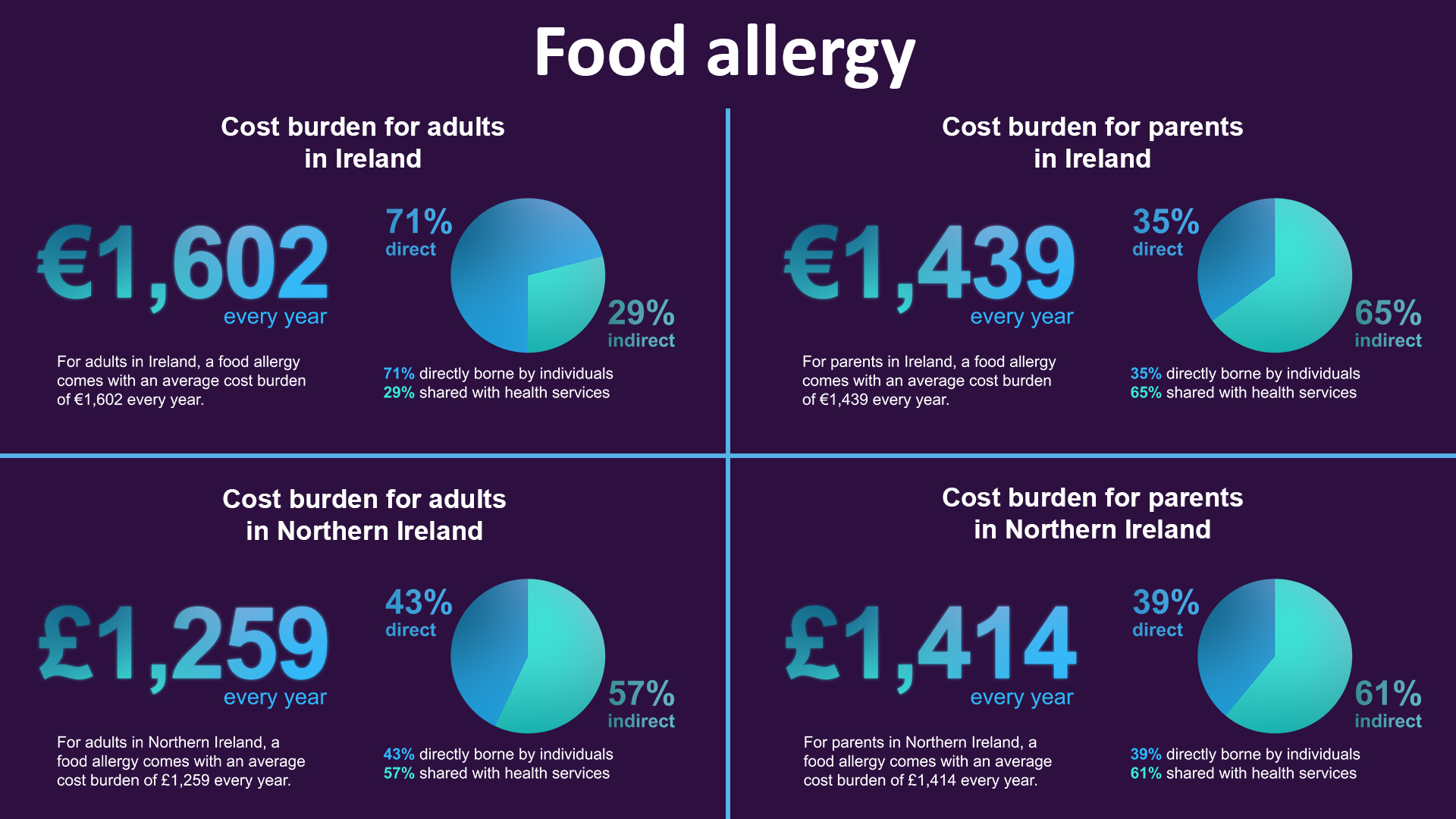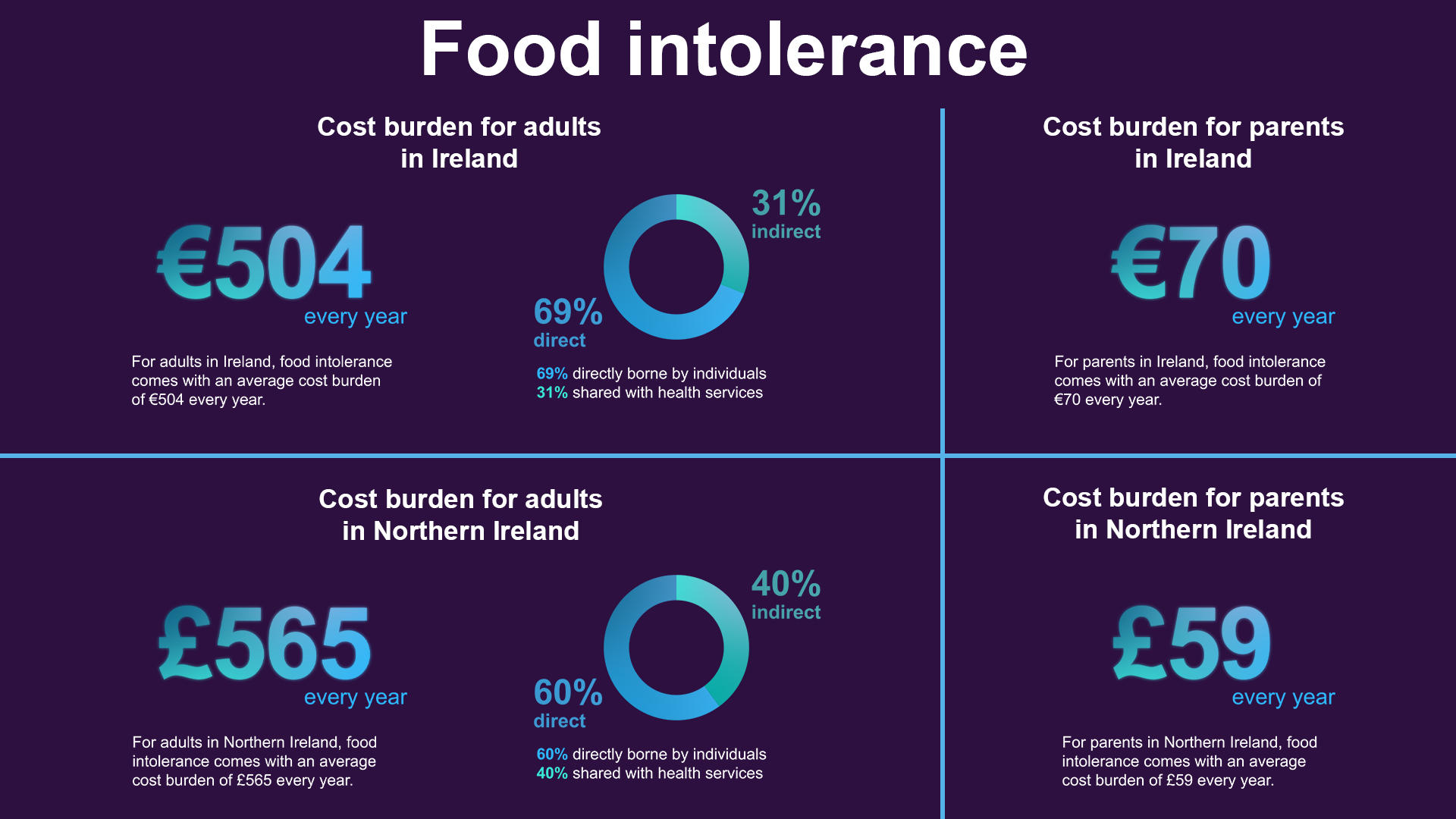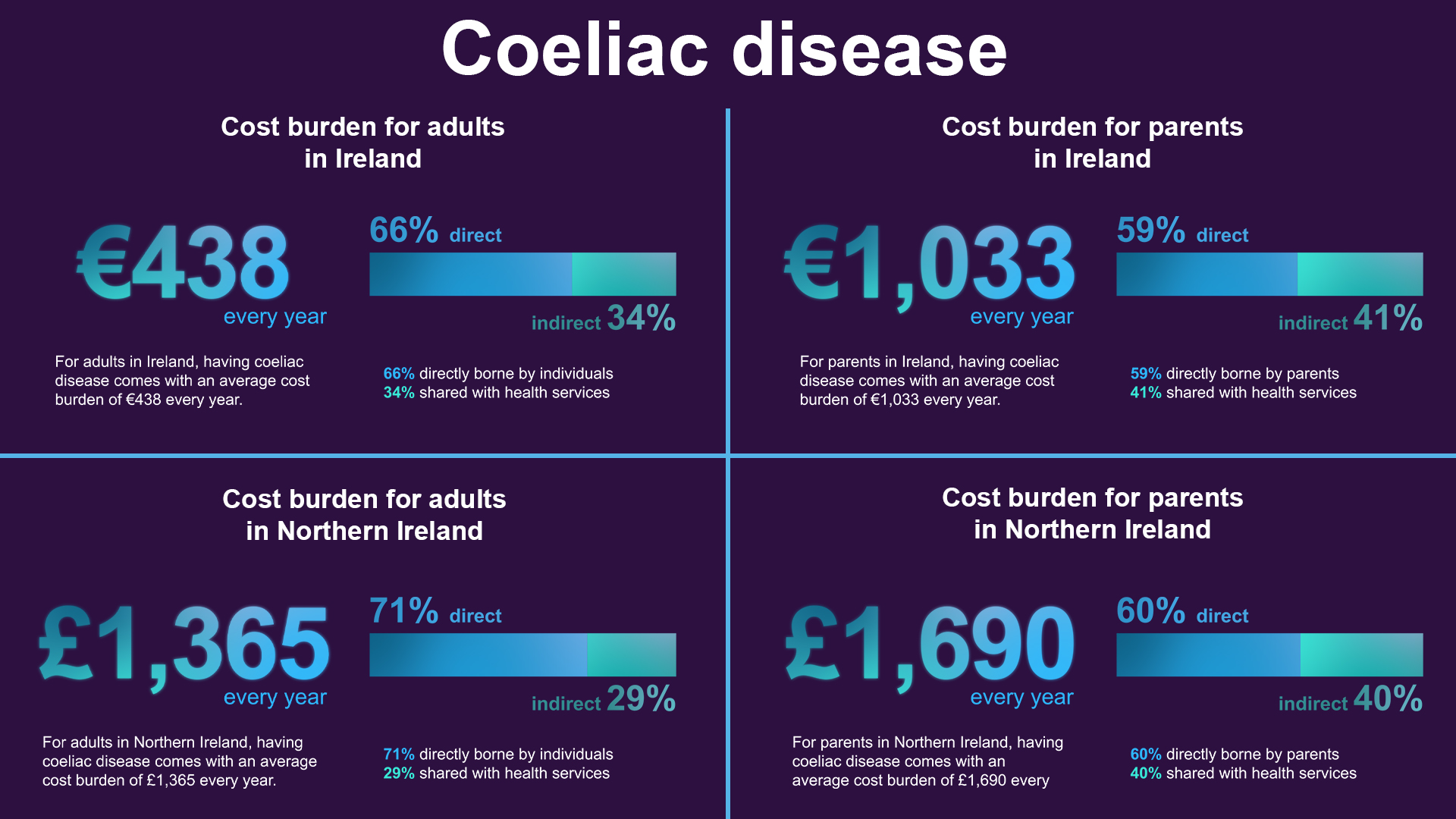The economic cost of food hypersensitivity

Download the report
The Economic Cost of Food Hypersensitivity [PDF, 4.43 MB, Opens in new window]
safefood commissioned researchers at the Technological University Dublin who collaborated with colleagues at Queen’s University Belfast to investigate, for the first time, the socioeconomic cost of having a food hypersensitivity in both Ireland and Northern Ireland. They looked at:
- The direct and indirect costs (including health)
- The intangible or non-monetary costs
- The prevalence of food hypersensitivity in both jurisdictions.
Online surveys were carried out from November 2019 until October 2020 and over 3,000 completed surveys were returned by adults or parents of children who had a medically diagnosed food allergy, a medically diagnosed coeliac disease or food intolerance, including a suspected or undiagnosed food allergy.
We now know that having a food hypersensitivity – food allergy, food intolerance or coeliac disease – costs, both financially and in terms of health and wellbeing.

In Ireland, the cost of having a food allergy was up to €1,325 every year for an adult, while in Northern Ireland the cost of having coeliac disease was up to £1,608 for a coeliac child.

For coeliac disease, these costs were €444 and €903 in Ireland, £737 and £1,608 in Northern Ireland.
 All statistics were benchmarked against the minimum wage so all cost values are conservative. The main driver of direct costs were healthcare-related expenses, while food costs, lost earnings and missed days were also significant expenses.
All statistics were benchmarked against the minimum wage so all cost values are conservative. The main driver of direct costs were healthcare-related expenses, while food costs, lost earnings and missed days were also significant expenses.
We found that having a food hypersensitivity also impacted on quality of life, regardless of the type of food hypersensitivity. Significantly higher levels of pain and discomfort were reported, while some adults and adolescents reported significant anxiety and depression. Respondents to the surveys were interviewed to investigate exactly which areas of life were impacted most by food hypersensitivity and to find out where improvements could be made.
Finally, an idea of the prevalence of the difference food hypersensitivities was determined from the survey data, but also from the scientific literature and through the collection of anonymised food hypersensitivity data from public and private organisations in Ireland and Northern Ireland (early years services, schools and care homes). The data generated in this study will contribute to the general body of knowledge on food hypersensitivity on the island of Ireland.
Download the report [PDF, 4.43 MB, Opens in new window]


